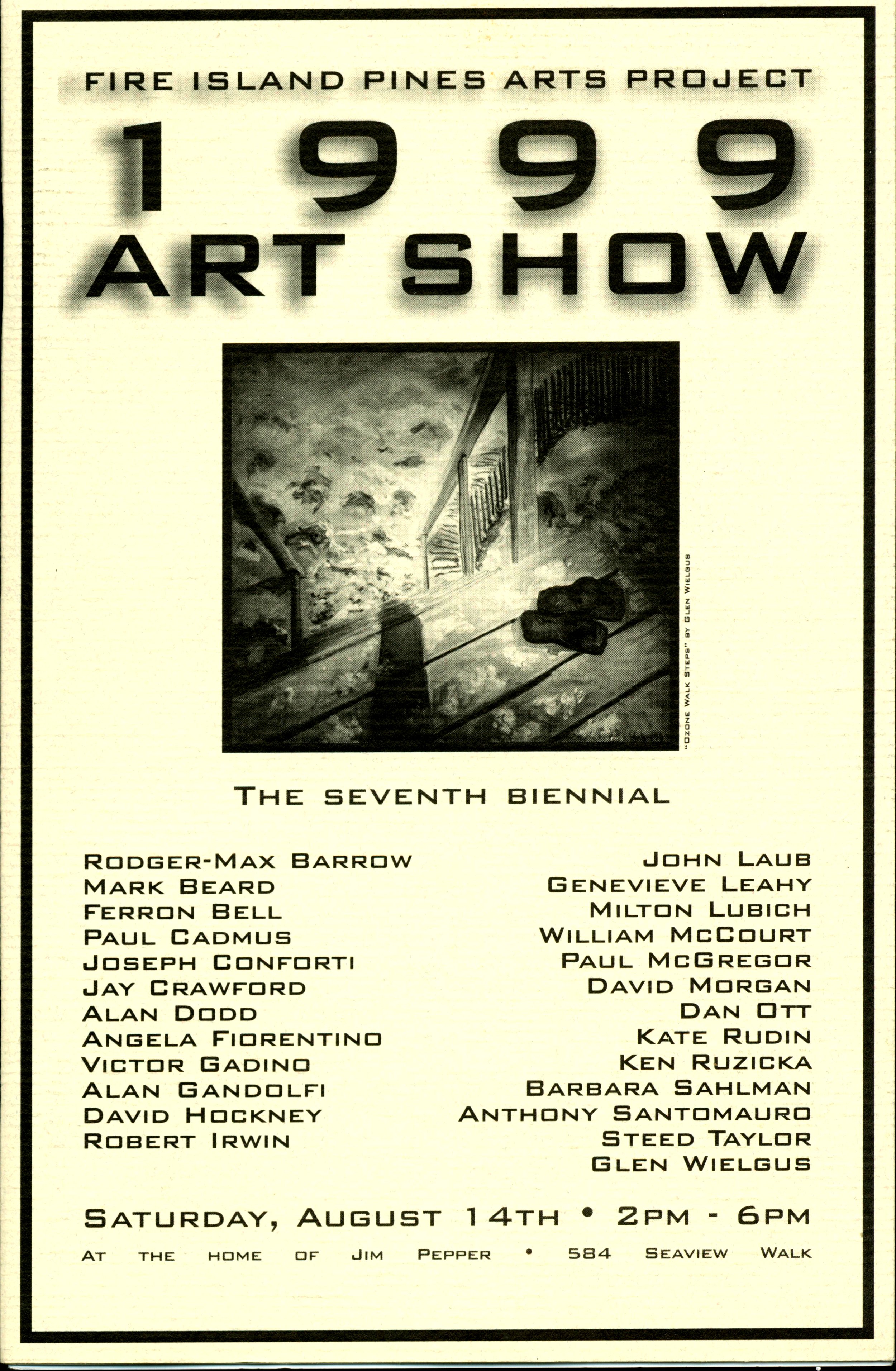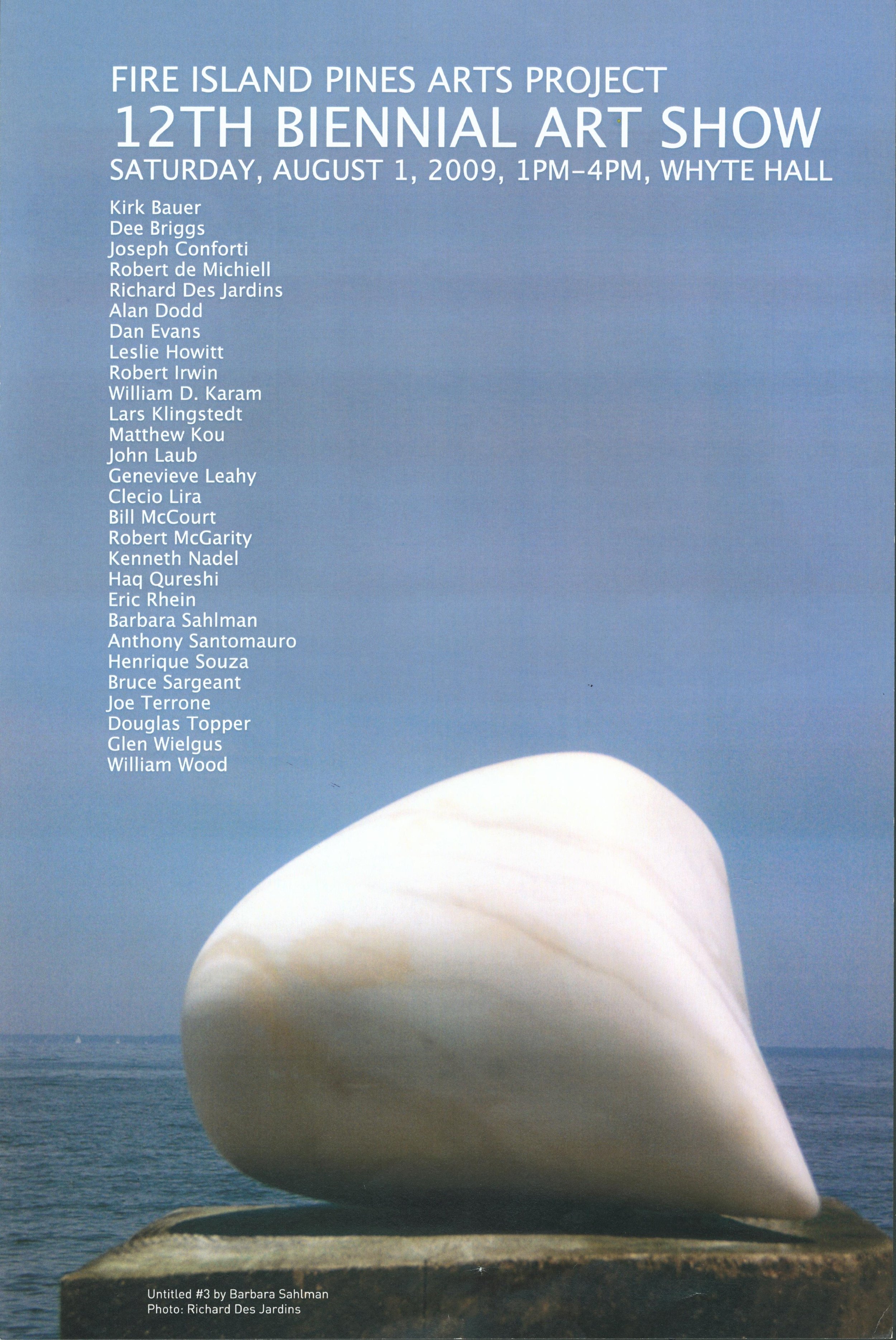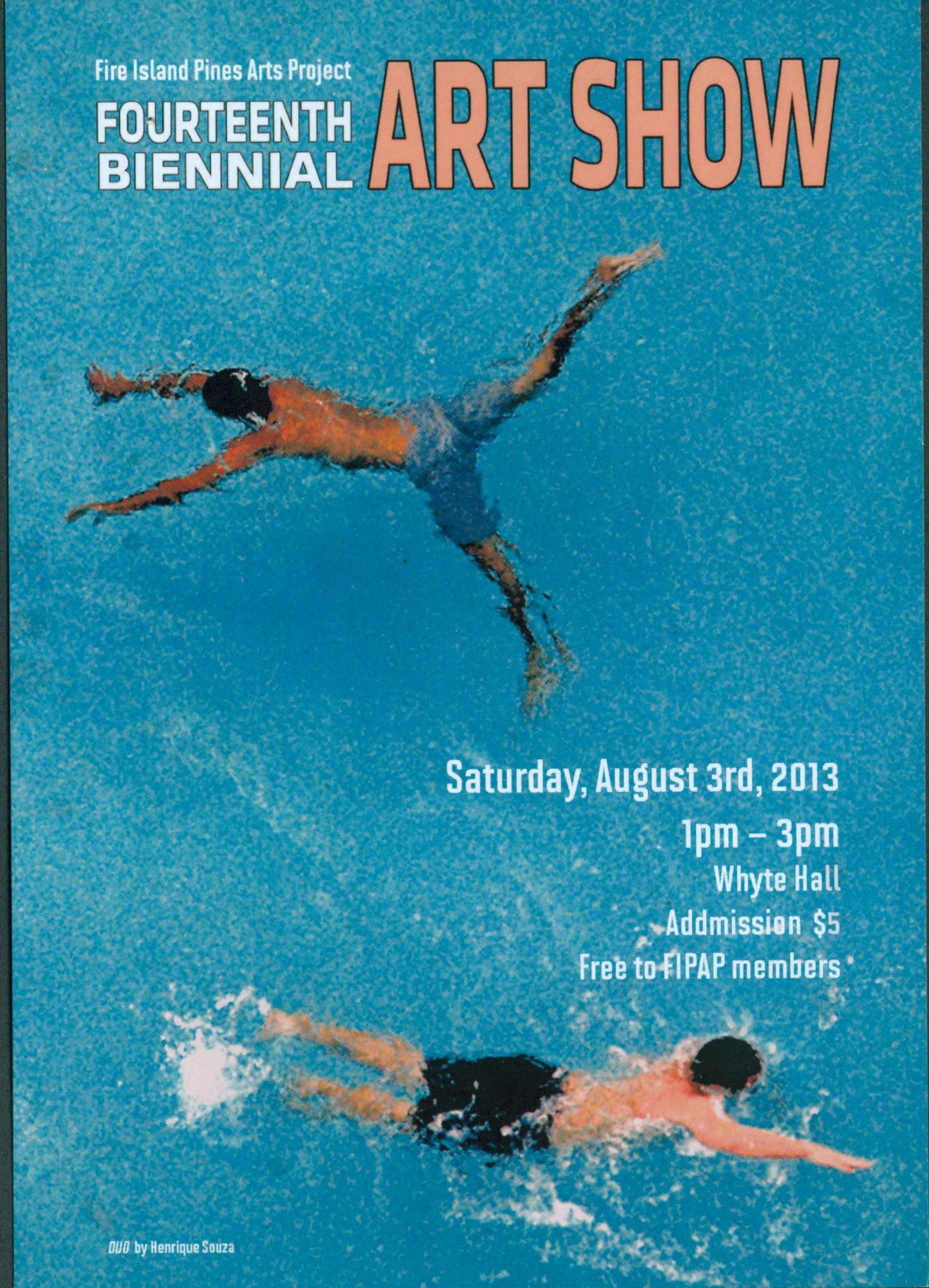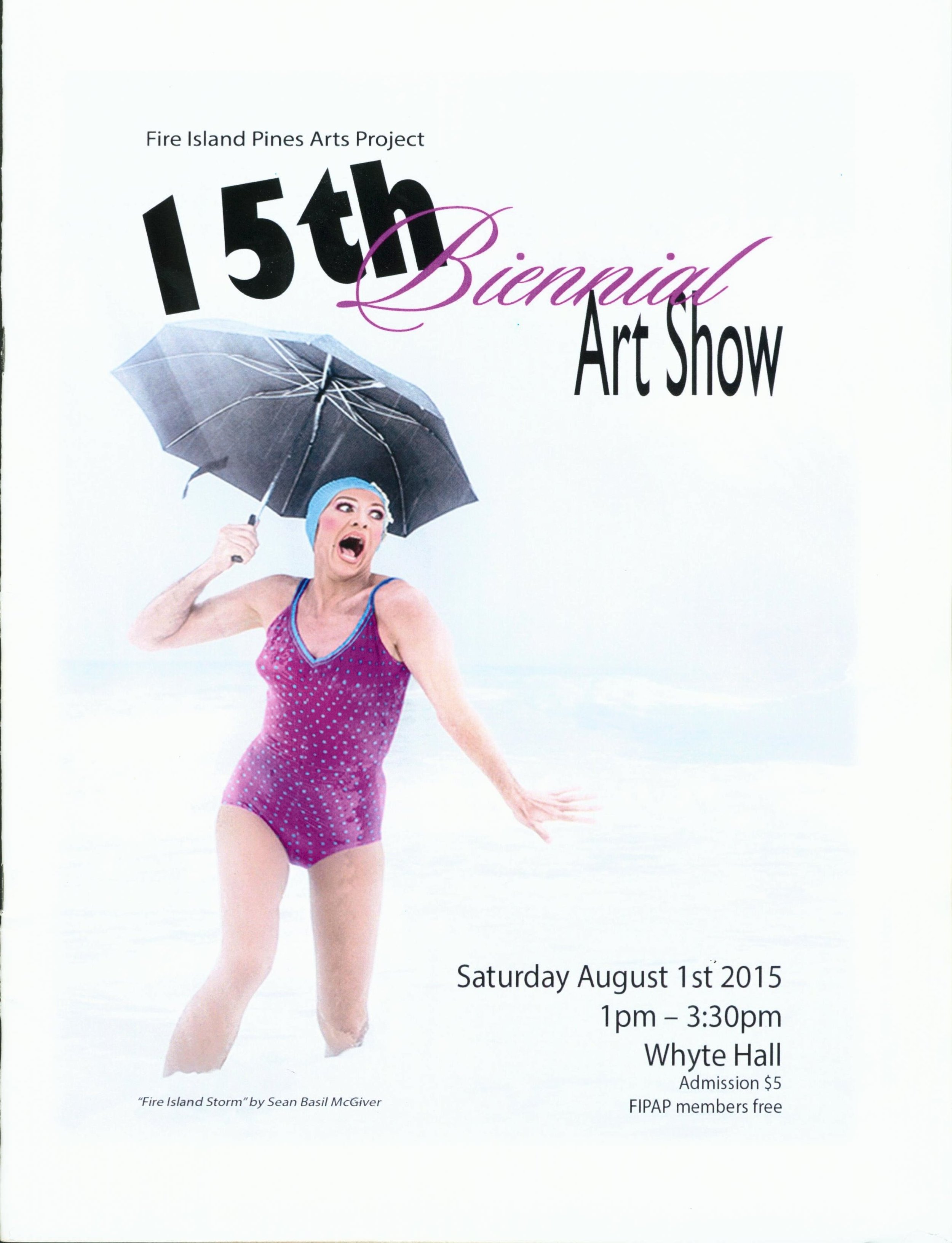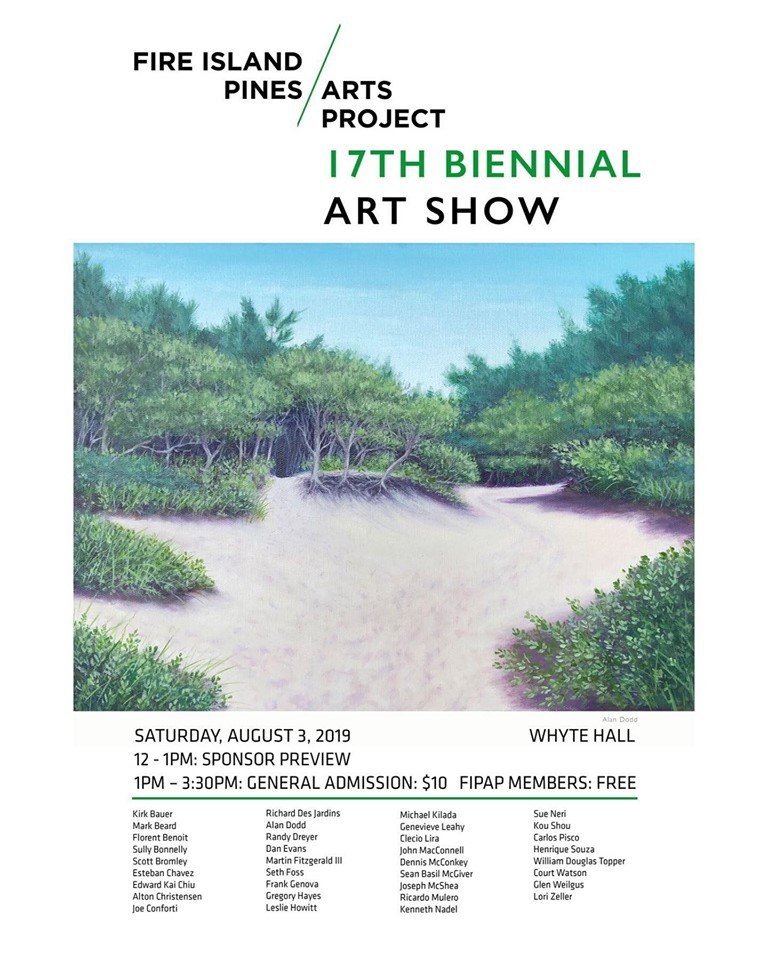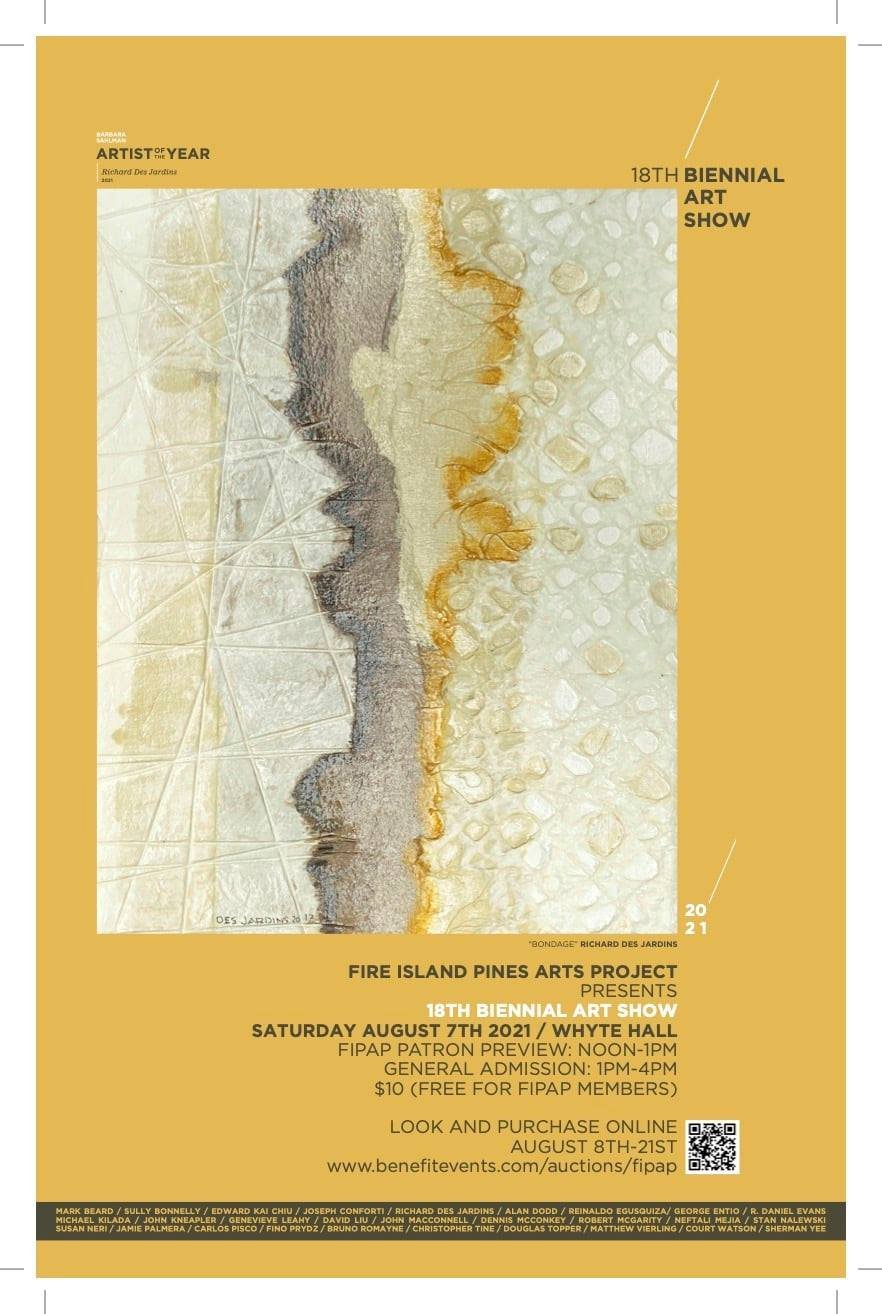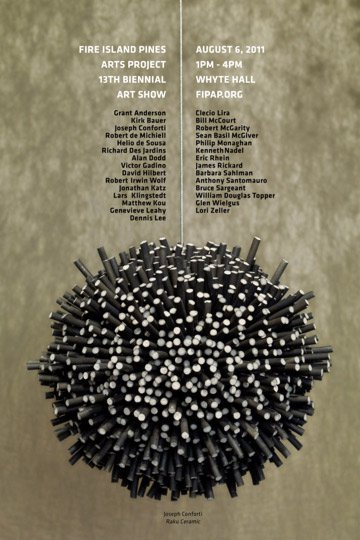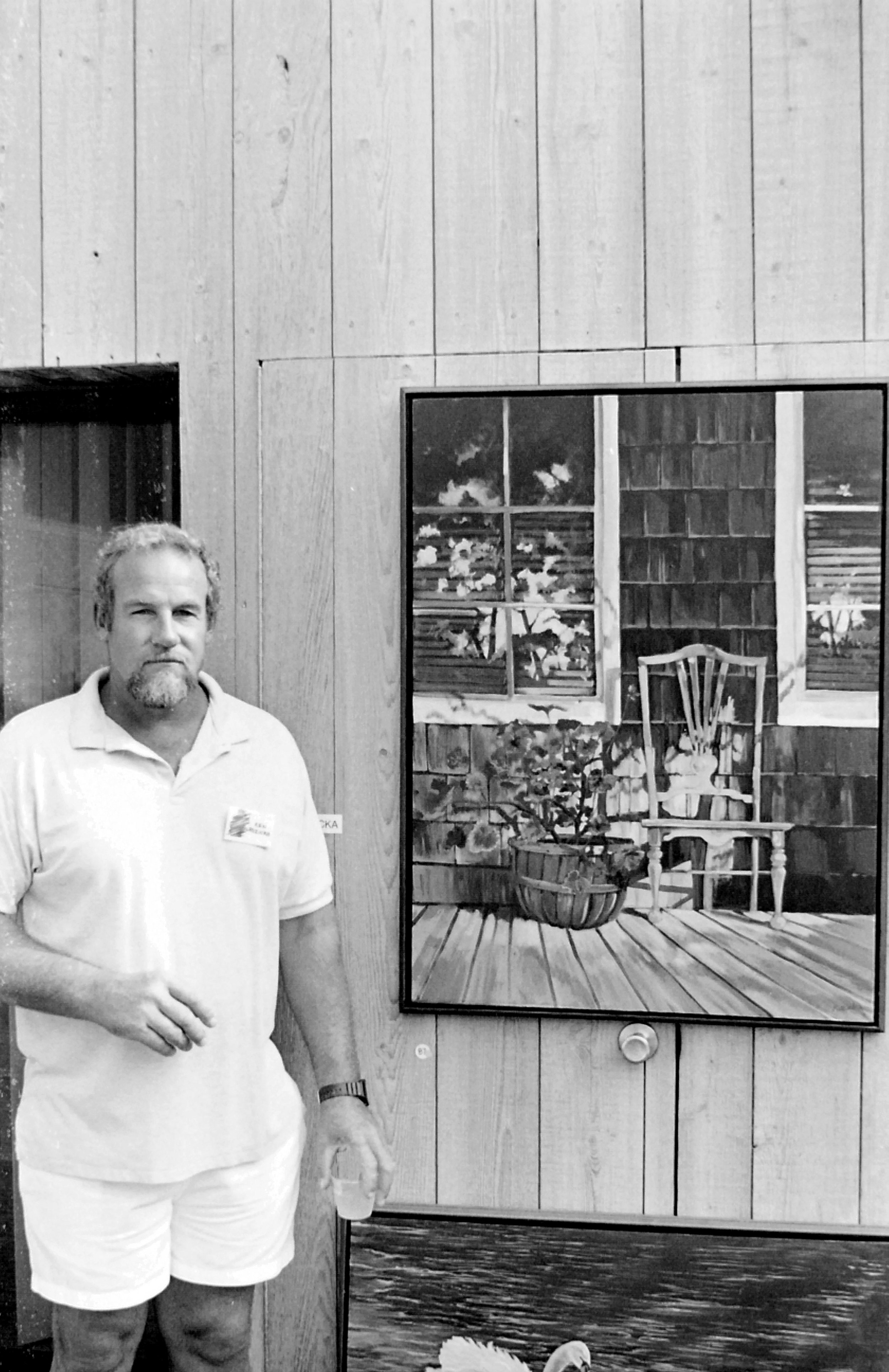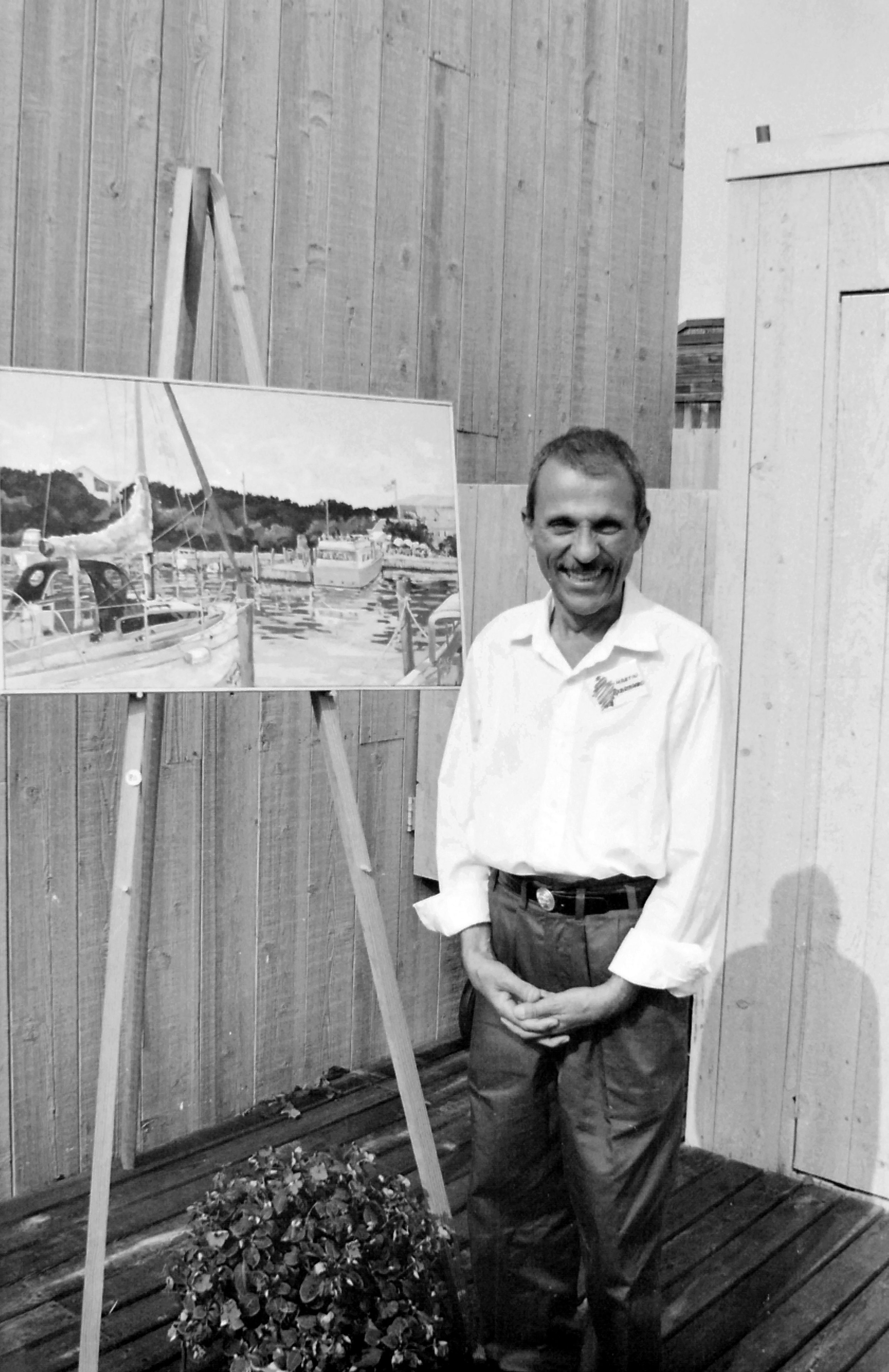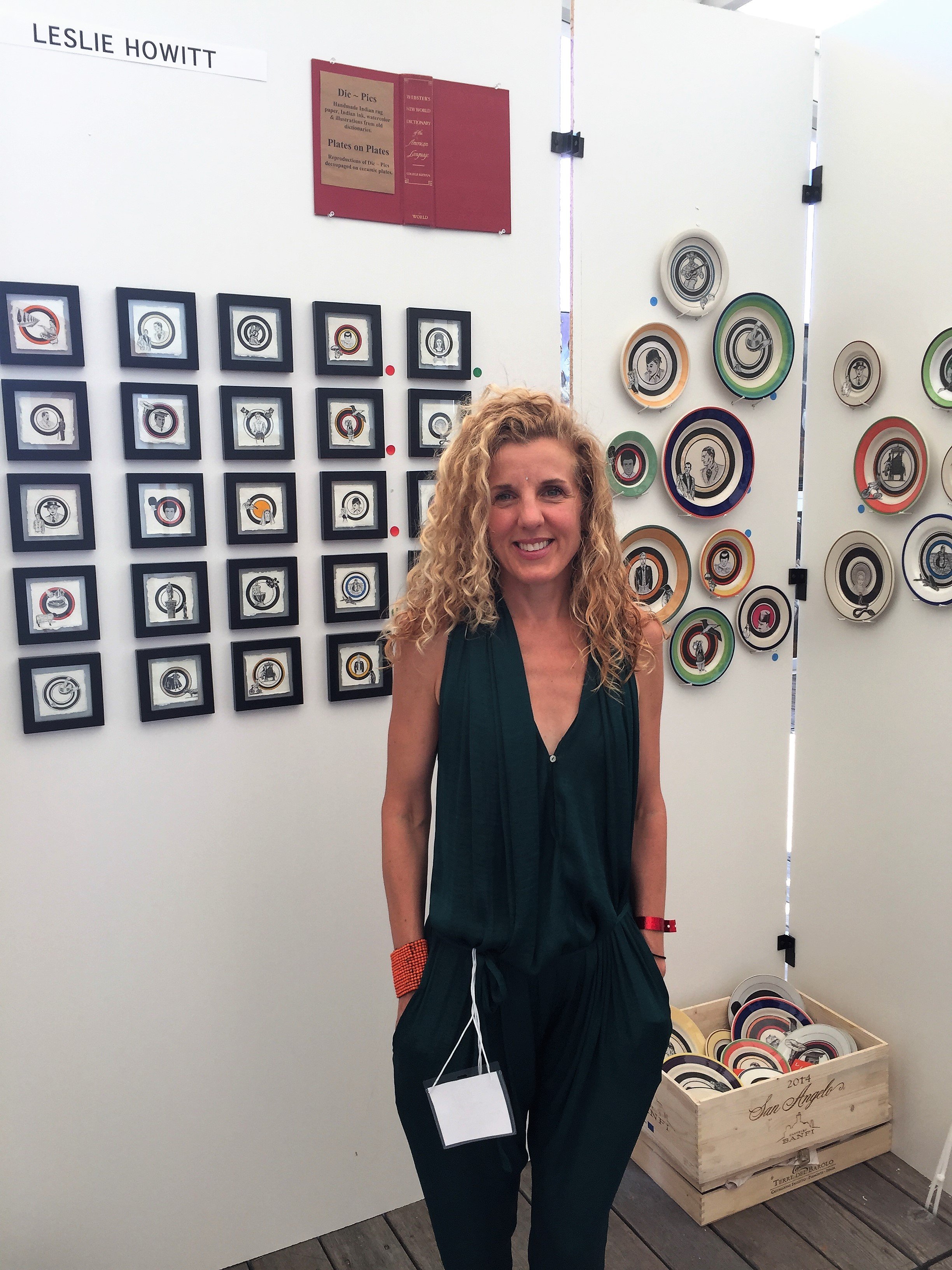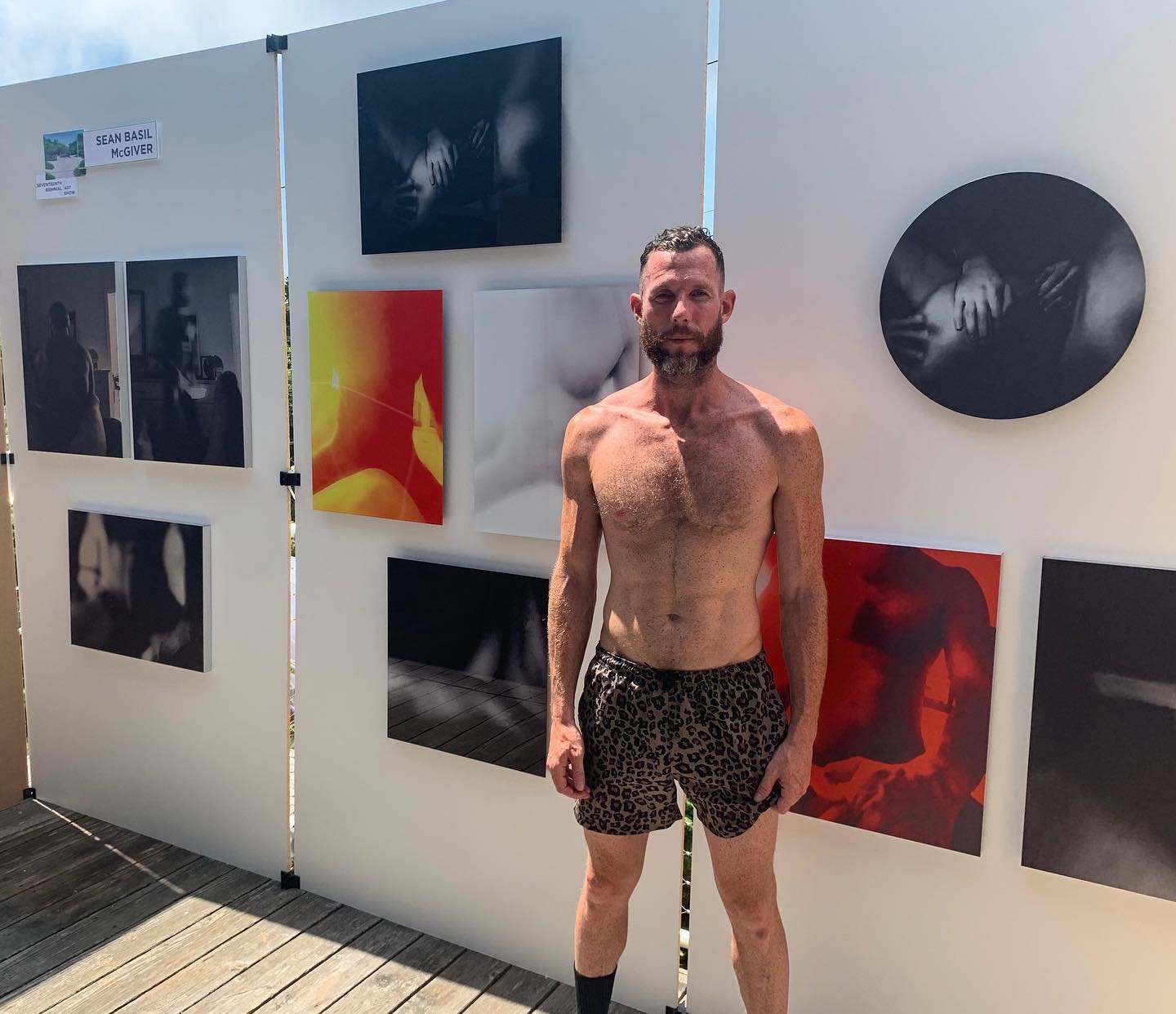The Biennial Art Show
A Canvas for Community
Art has always been a part of the fabric of the Pines. The natural beauty of the beach has long served as a muse, drawing creatives of all kinds. By the 1970s, the community had become a vibrant haven for designers, artists, architects, and actors. Among the earliest to showcase work was Ferron Bell, who participated in one of the first independent art shows in 1969.
Though artists and artwork were everywhere, there was no formal organization to coordinate exhibitions. Instead, grassroots shows organically emerged throughout the 1970s. These were entirely community-run, with a charmingly homespun feel—filled with passion, personality, and plenty of homemade art.
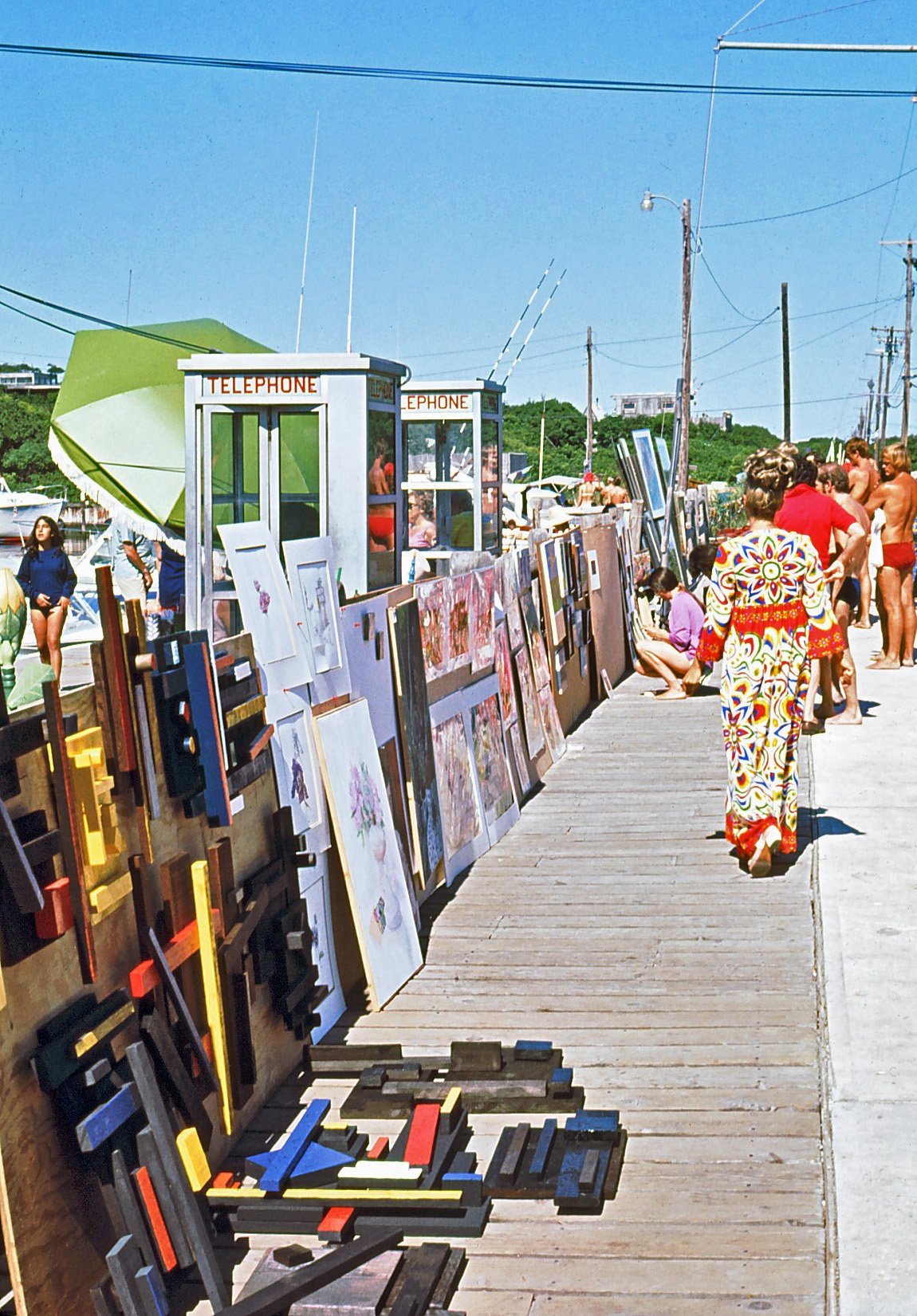
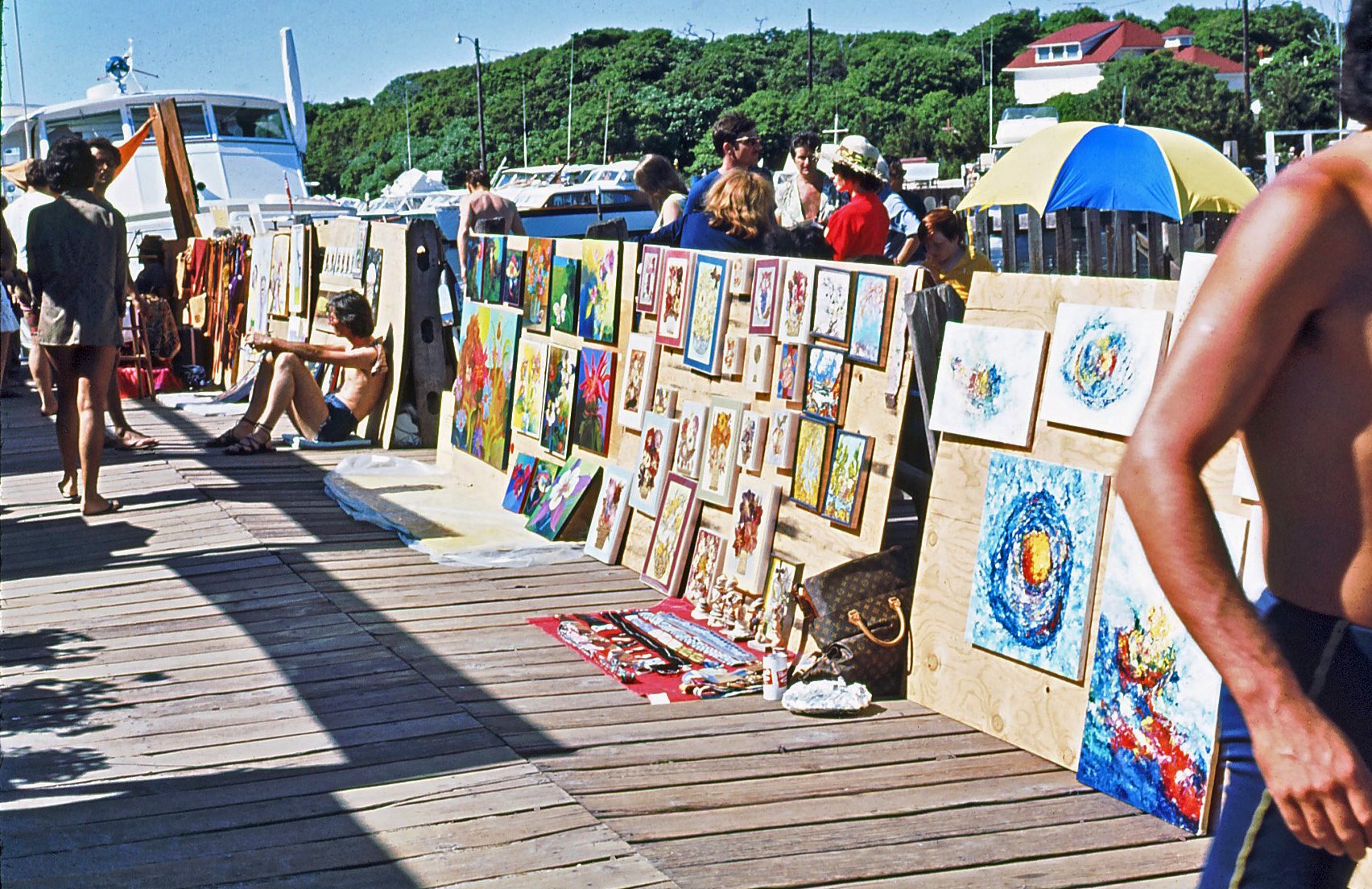


It was in 1985, art dealer Sylvan Cole and painter Ferron Bell held an impromptu deck show on Bayside 6. This step put the Pines on the path to what has become one of the most enduring artistic traditions on Fire Island, the Biennial Art Show, and the seed of the Fire Island Pines Arts Project (FIPAP), an organization that would institutionalize the artistic soul of the Pines.
The following year, Cole—alongside composer David Baker, set designer Bill Henckley, and painter John Laub—formalized FIPAP as a nonprofit. Their mission was clear: to support and celebrate the performing and visual arts in a community already rich in cultural vibrancy. Fueled by passion rather than funding, Cole sold memberships from a folding table near the harbor. Their first official Biennial Art Show launched in 1987 at the home of Dr. Herbert Katzin, whose house became a generous and recurring host in the early years.
From the late 1980s through the early 2000s, the show migrated across the Pines, finding creative ways to adapt to the homes and decks of willing residents. Exhibitions were held at the homes of various Pines community members including, Gil Johnson and John Robinson, Robert Krieger and Paul Rosenberg, Ronald Norsworthy and James Hedges, Barbara and Marvin Gilston, Fred Langevin, Jim Pepper and others.
Each location lent its own flavor to the event. Walls were painted. Lighting was rigged. Artworks were carefully placed to harmonize with the Pines' light, architecture, and sky. These shifting spaces were more than backdrops—they were part of the performance, turning homes into temporary museums and neighbors into curators.
But the art show’s growth soon demanded a permanent home. That came in the form of Whyte Hall, named after legendary Pines developer and benefactor John B. Whyte. Whyte’s generosity, along with others like Brandon Fradd, led to the major reconstruction of the long-standing Community House, which reopened in 2007 as a state-of-the-art cultural center. Since then, Whyte Hall has served as the Biennial’s primary venue, with its gallery walls and outdoor decks coming alive with works that span from the playful to the profound.
Over nearly four decades, the Biennial has showcased a dazzling spectrum of artists—some local, others world-renowned. Early contributors like Genevieve Leahy, Mark Beard, and Richard Des Jardins became pillars of the show. The inclusion of iconic artists such as David Hockney and Paul Cadmus elevated its profile. In recent years, the Barbara Sahlman Artist of the Year Award has recognized emerging and established talents alike, honoring those who not only exhibit but embody the creative spirit of the Pines.
Yet, the magic of the Biennial lies not just in the art but in the community that supports it. Behind every brushstroke and installation is a volunteer—whether building walls, hanging lights, pouring wine, or sweeping floors after the show. This army of unsung contributors ensures that each Biennial isn’t just an exhibition, but an experience.
The Biennial’s success has also been made possible by institutional supporters. The Fire Island Pines Property Owners Association (FIPPOA) and its charitable arm, The Pines Foundation, have offered financial and logistical backing, while partner organizations like BOFFO and Trailblazers Park have expanded the artistic footprint of the island, blending performance, activism, and visual storytelling. Together, these groups form a constellation of creative infrastructure that nurtures the Biennial year after year.
As the show heads toward its 20th edition in 2025, it stands not only as a celebration of art, but as a living chronicle of the Pines itself—a place where aesthetics, identity, and history intersect. What began as a backyard experiment is now a cornerstone of queer culture, a beacon for emerging artists, and a reminder that on Fire Island, art isn’t an accessory—it’s part of the architecture of community.
And so, every two years, the Biennial returns—not just to hang pictures on walls, but to reflect the ever-evolving mirror of the Pines back to itself. Beautiful. Bold. Unapologetically alive.
Scroll down to see photos and sample the art and promotions through the years.
John Robinson and Gil Johnson.
1979
1985. Sylvan Cole on right with artist Ferron Bell a recognized art dealer and Pines resident organizes the first Art Show.
Exhibition at the home of Barbara and Marvin Gilston
1993
Bayside 6, home of the first exhibition in 1985 and again in 1993
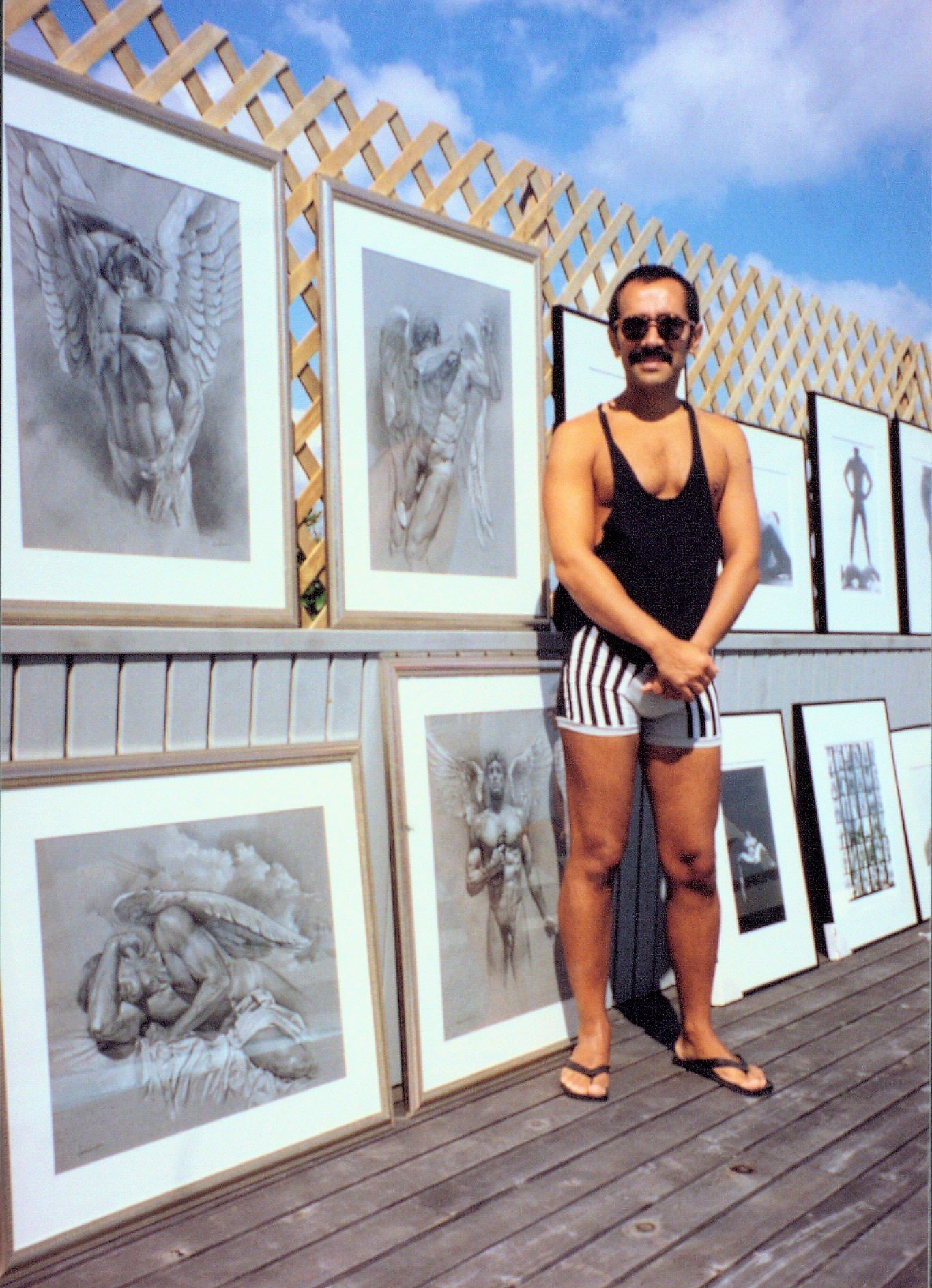
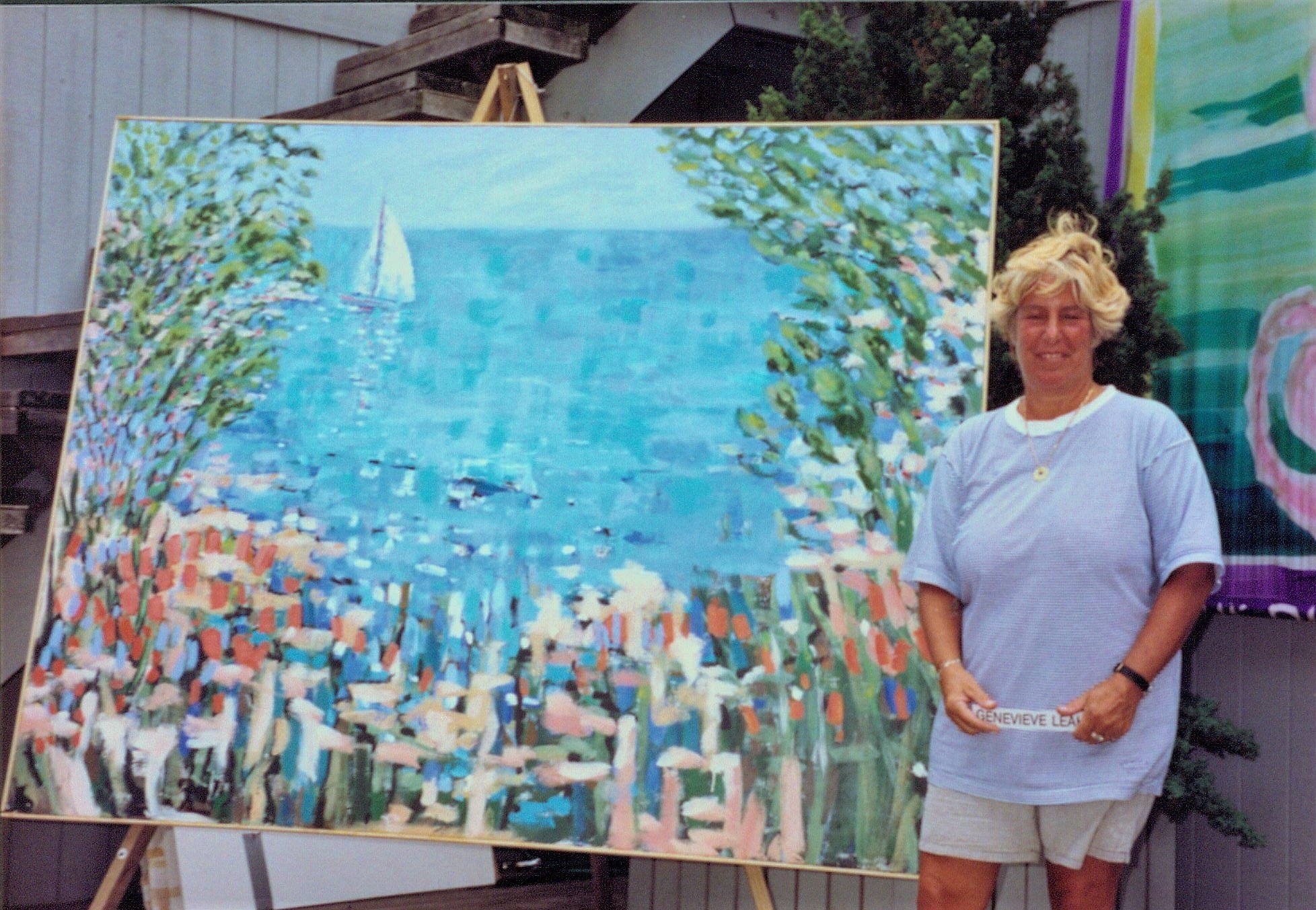
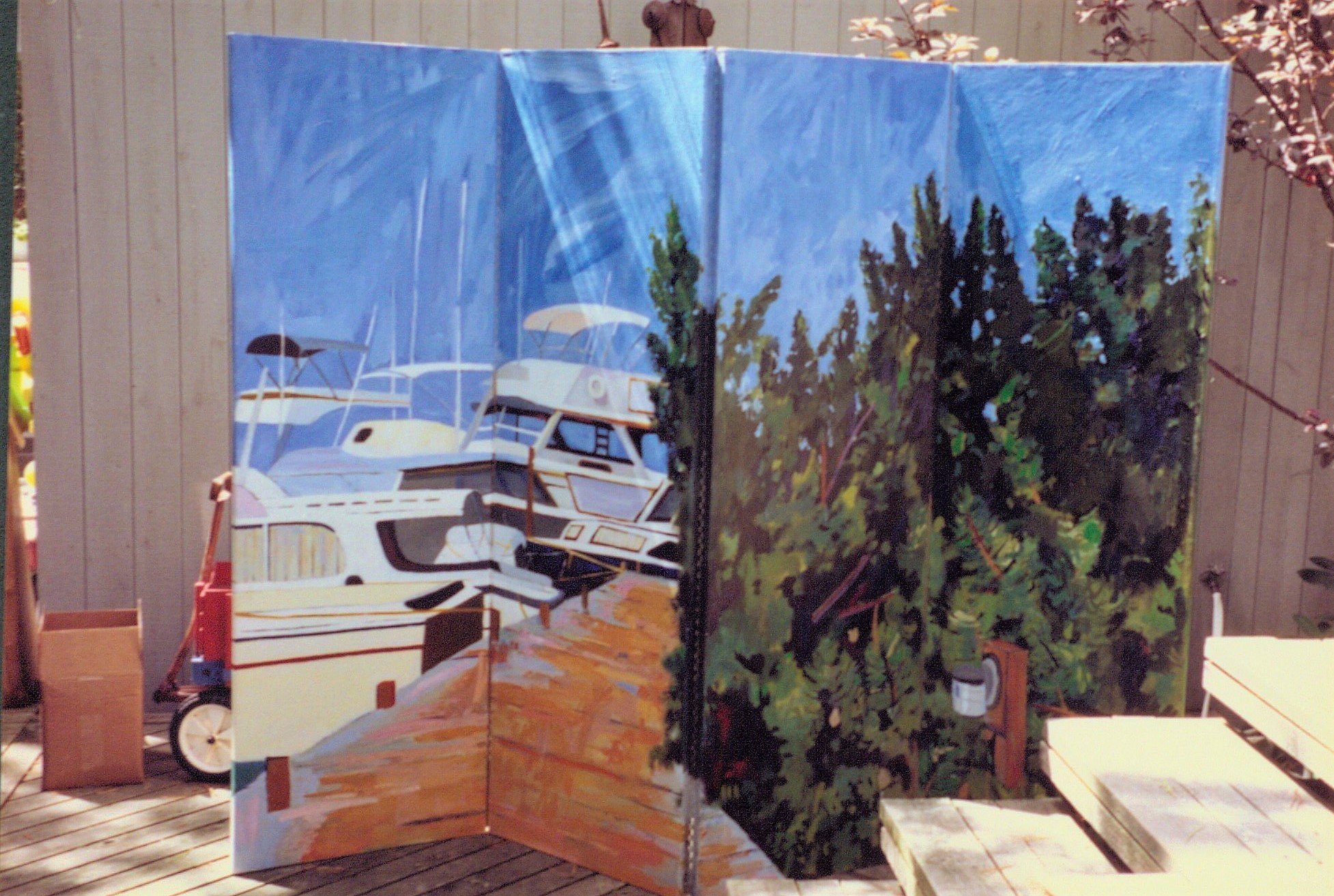
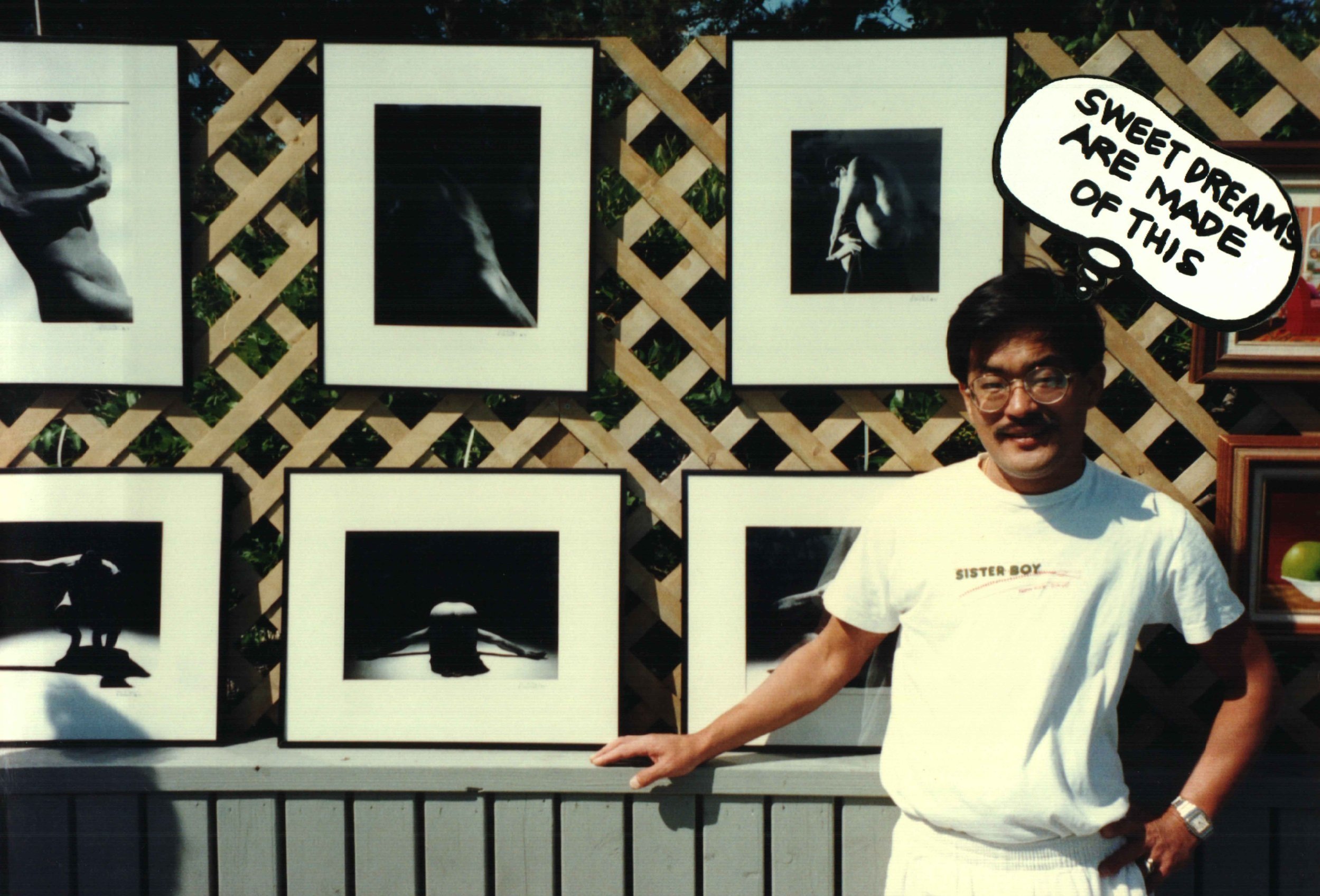
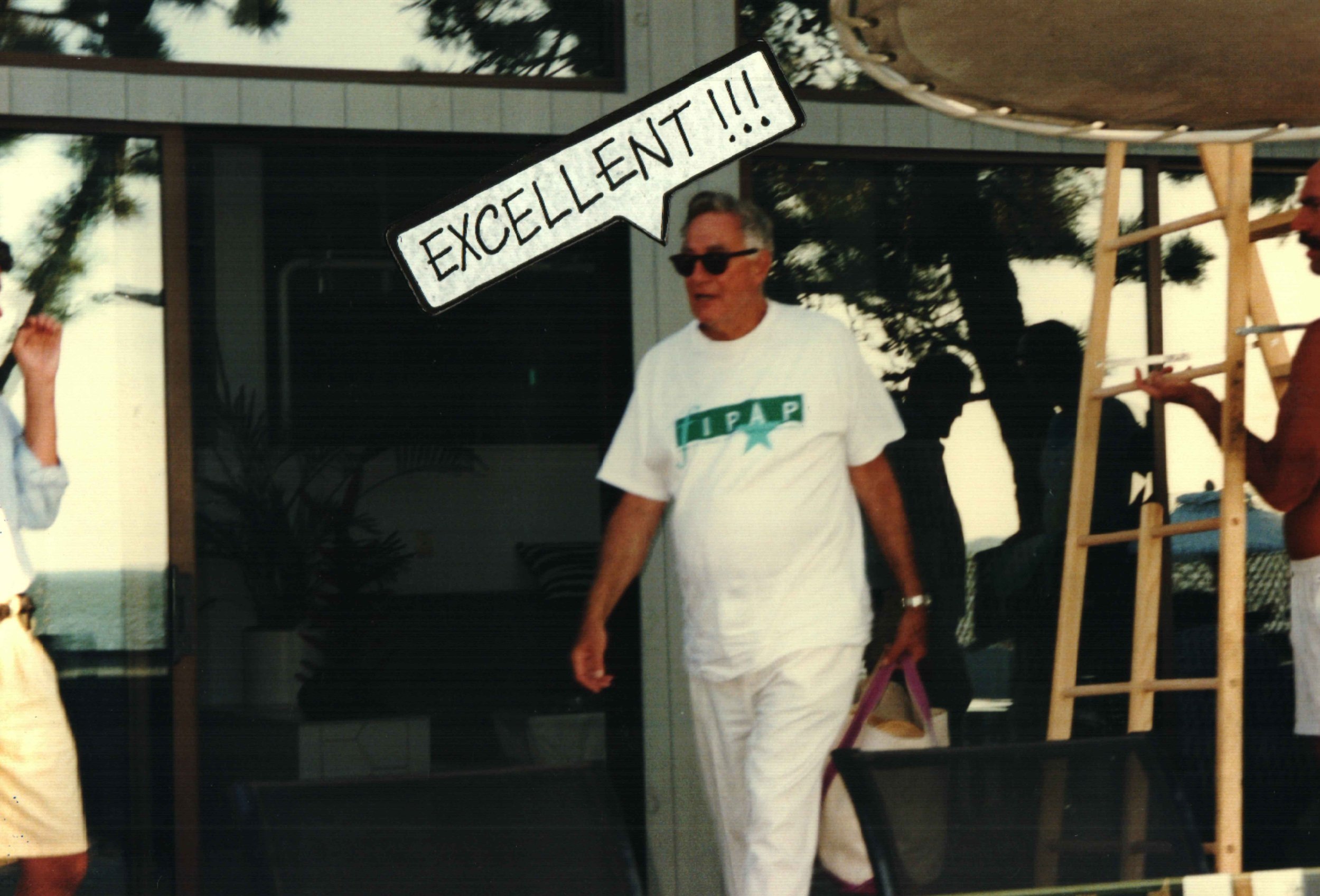
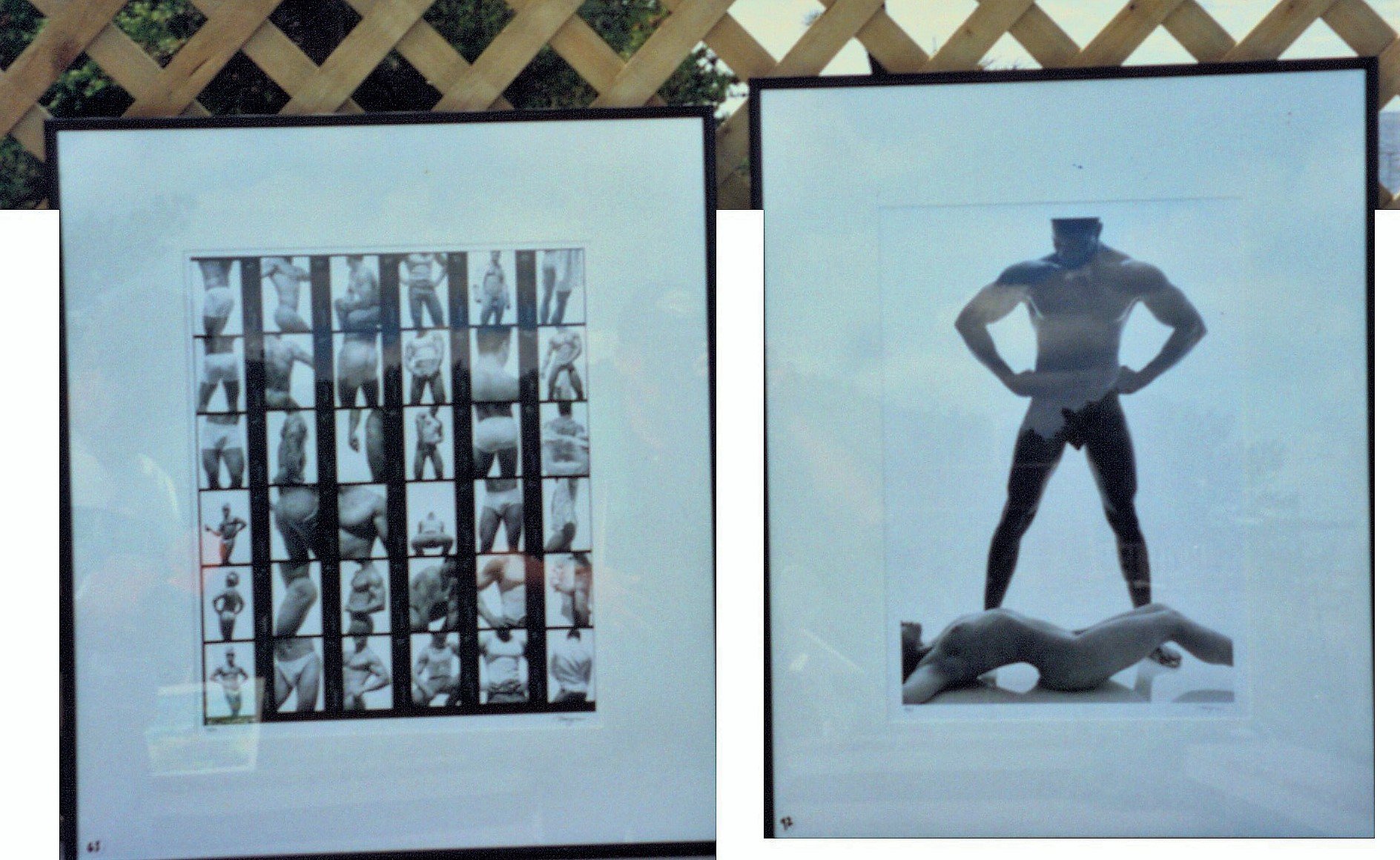

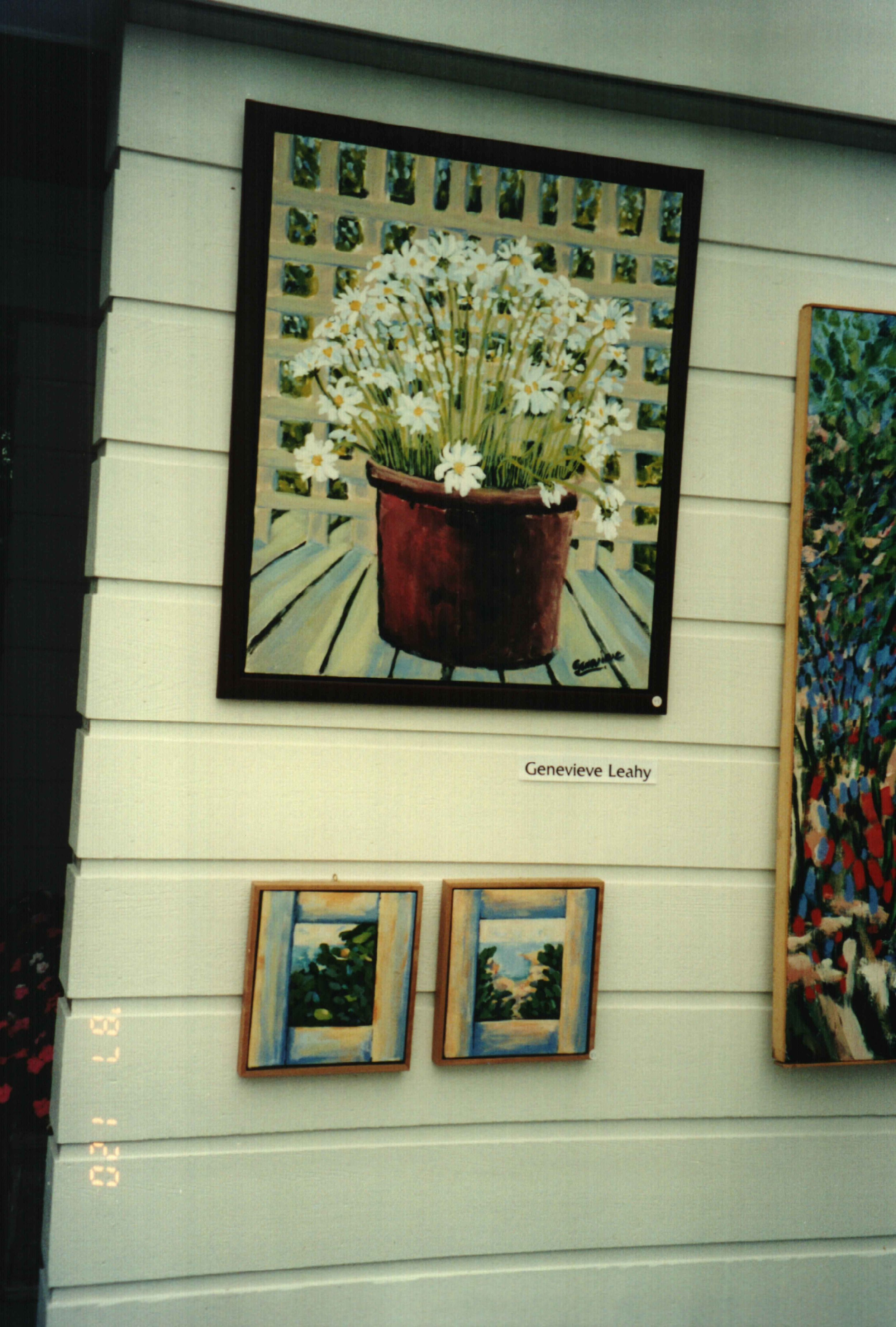
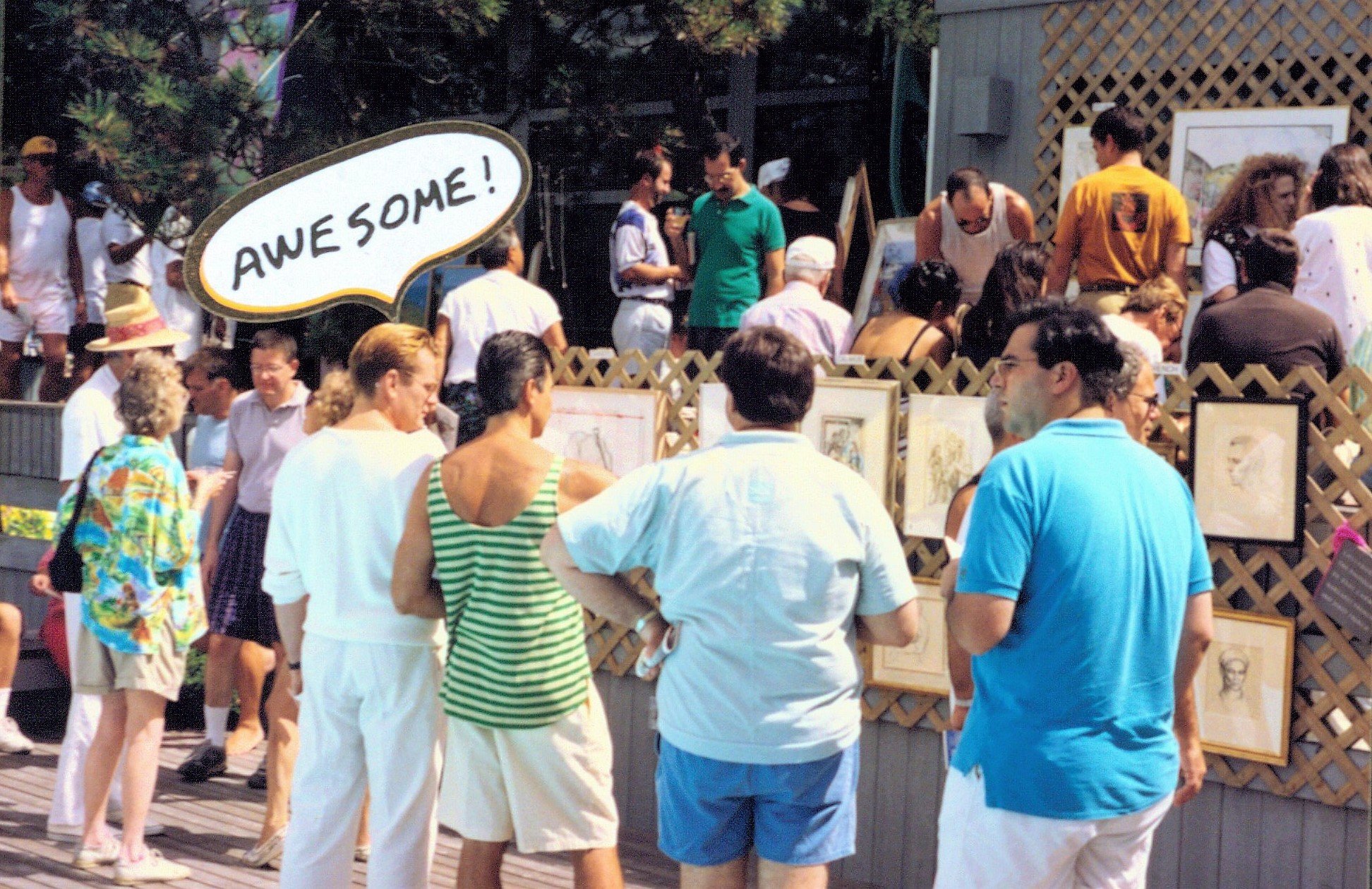
1995
Art by Angela Fiorentino.
1997
Art of Glen Wielgus.
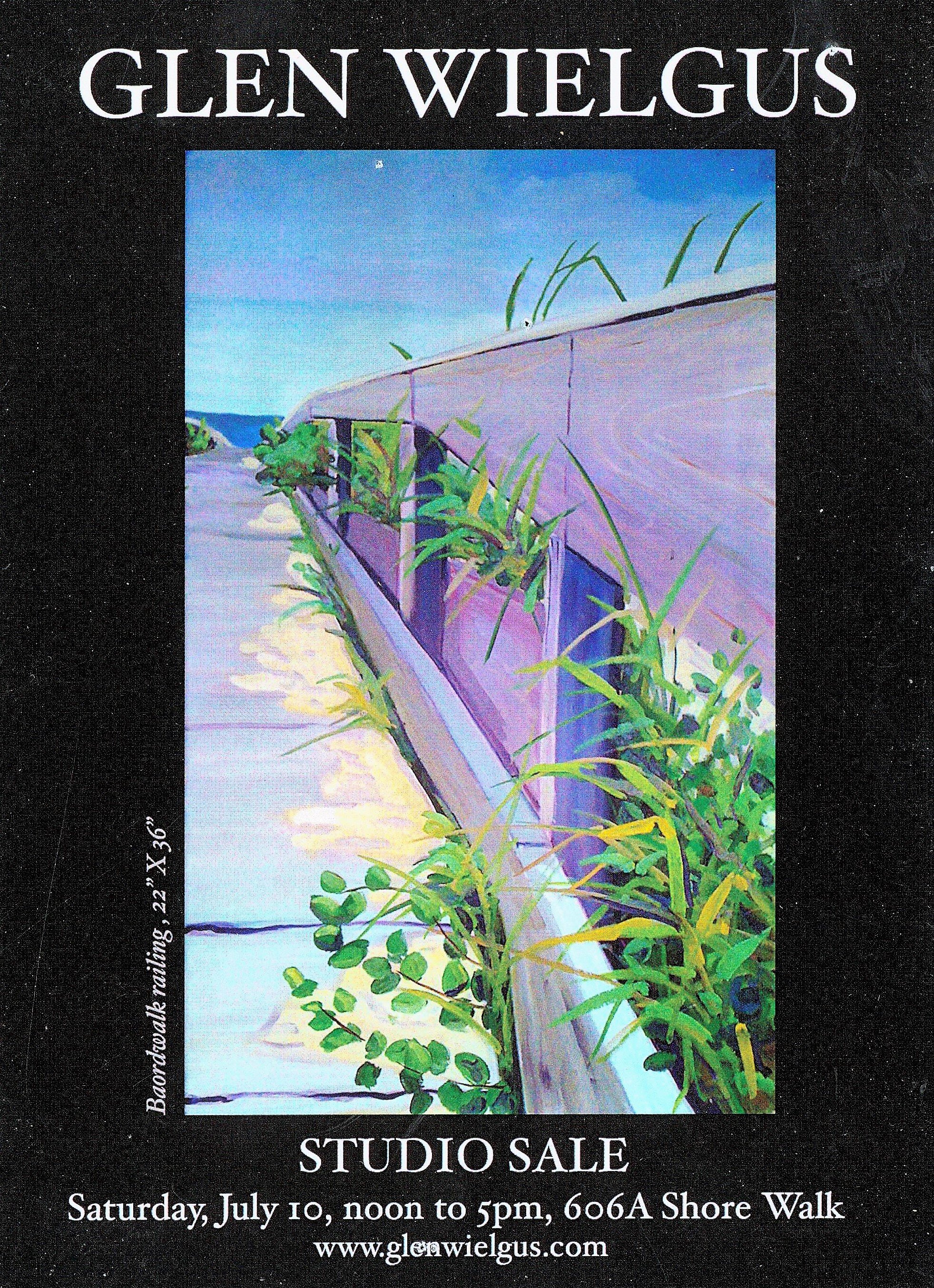
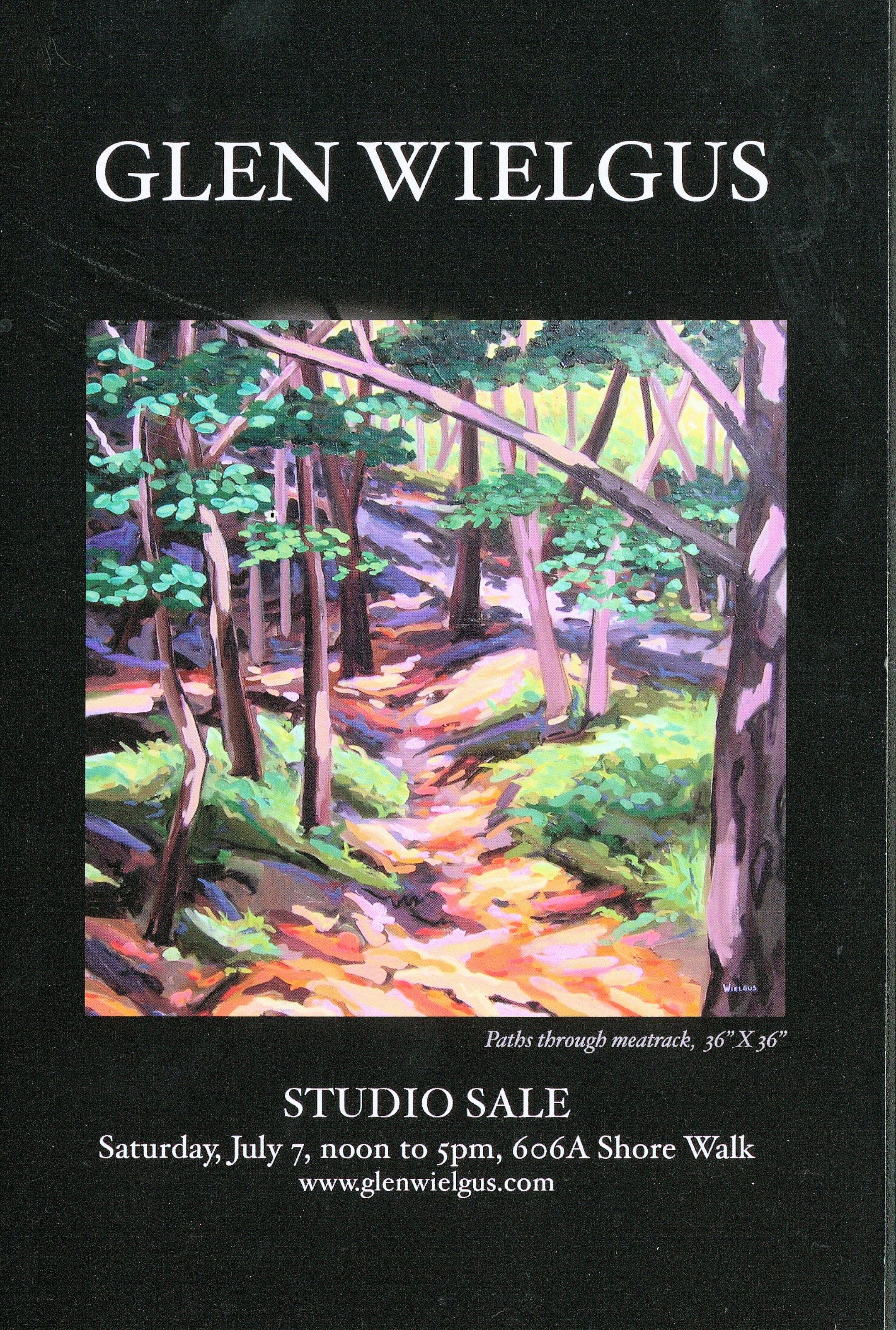
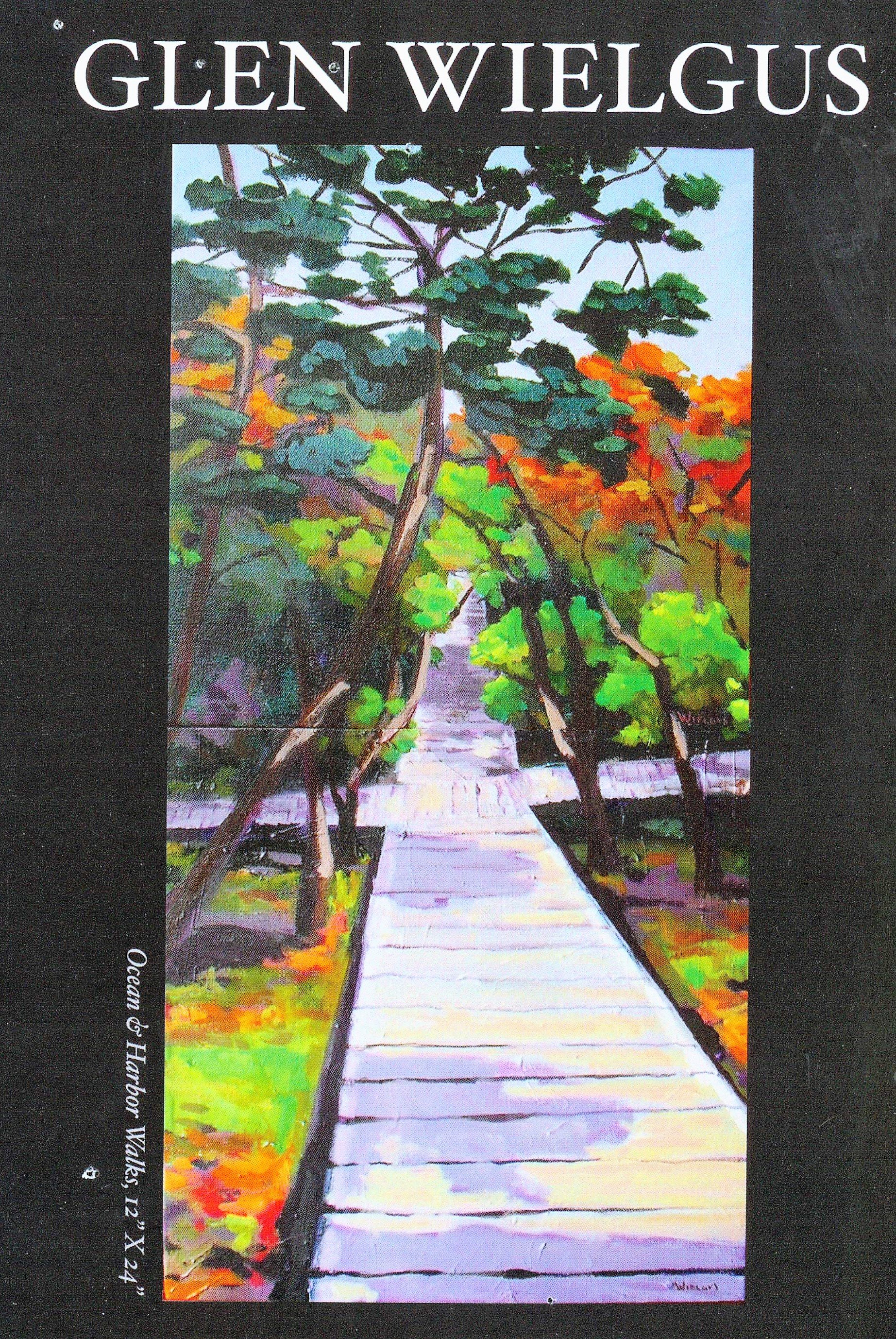
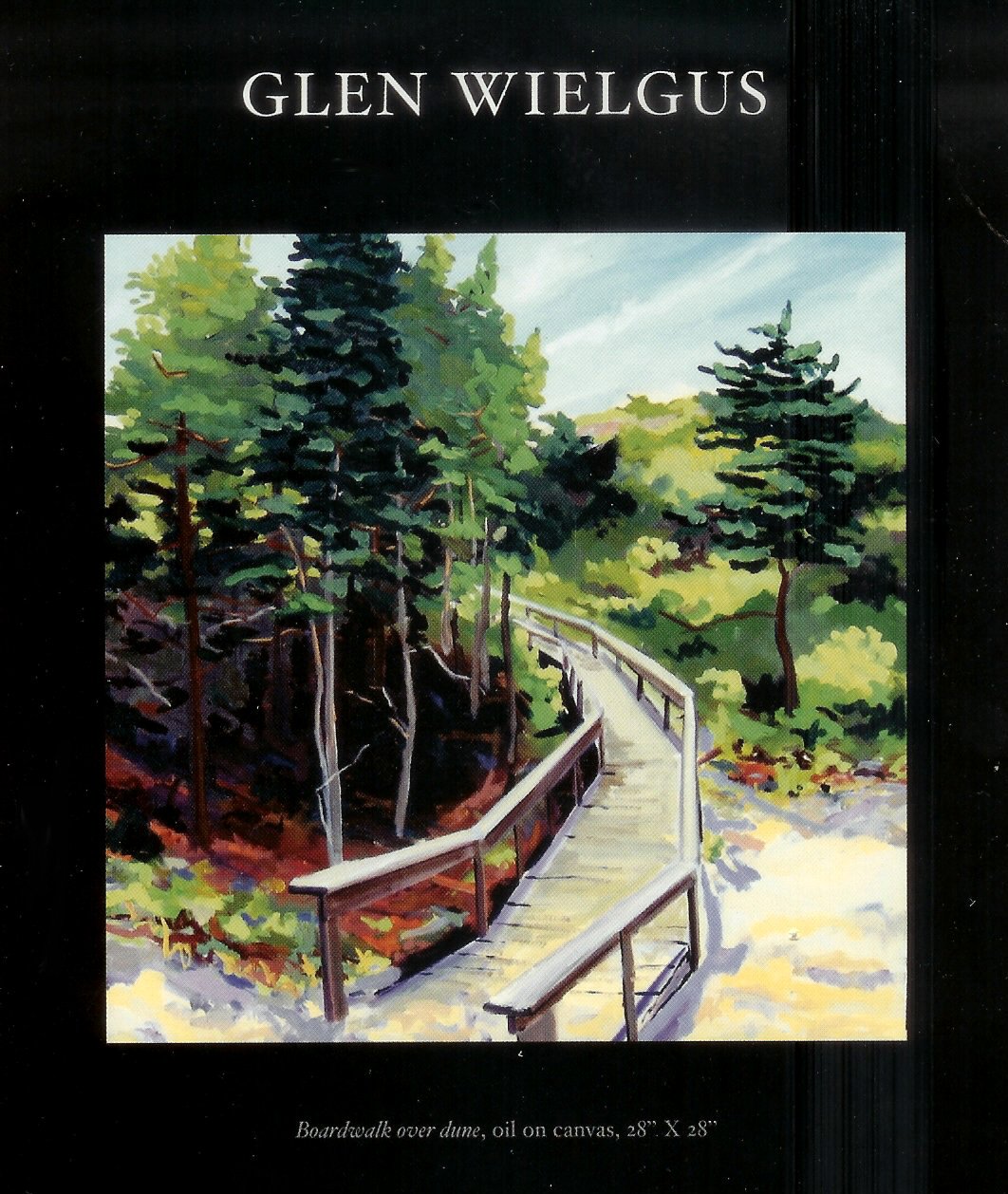
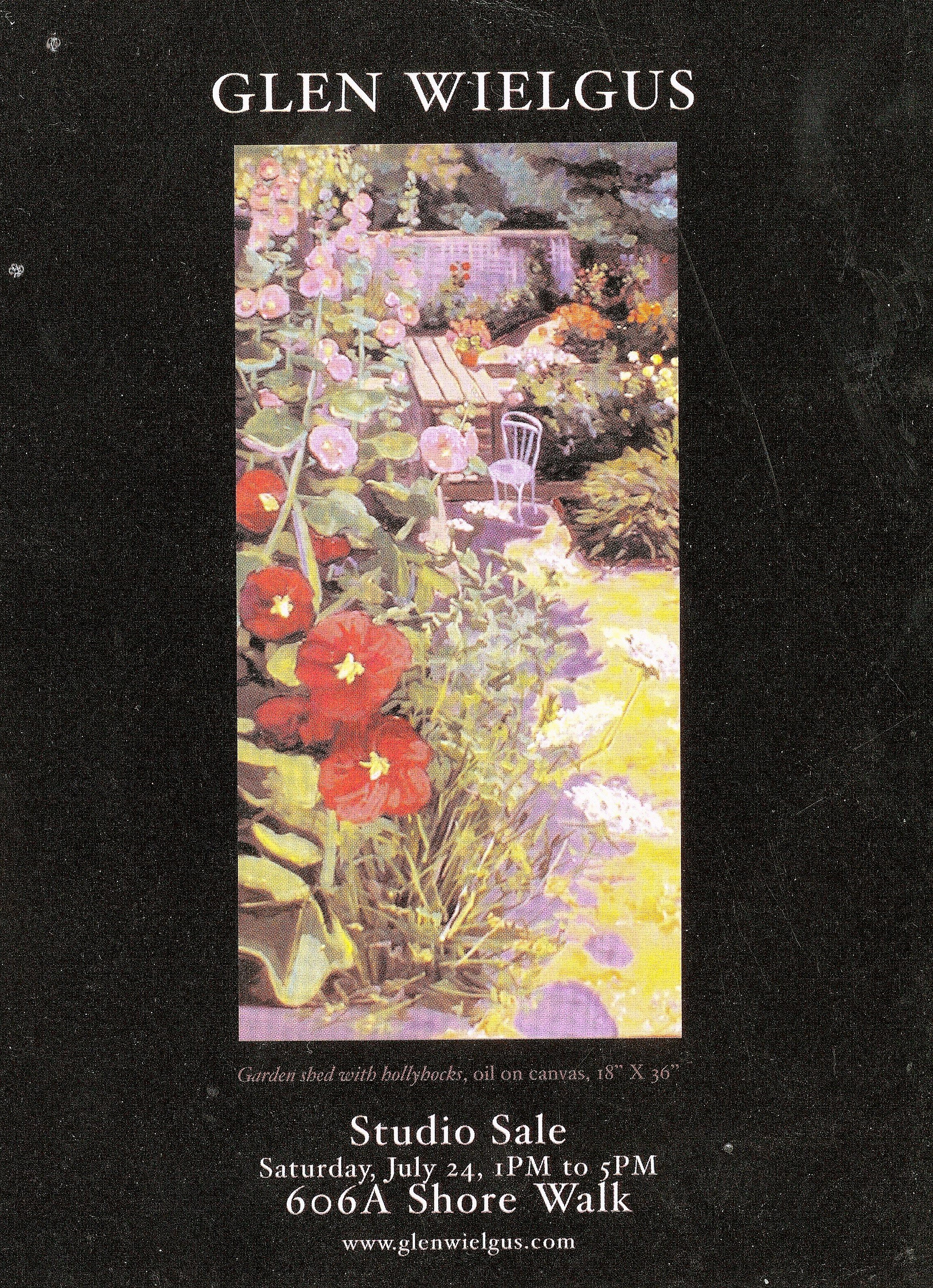
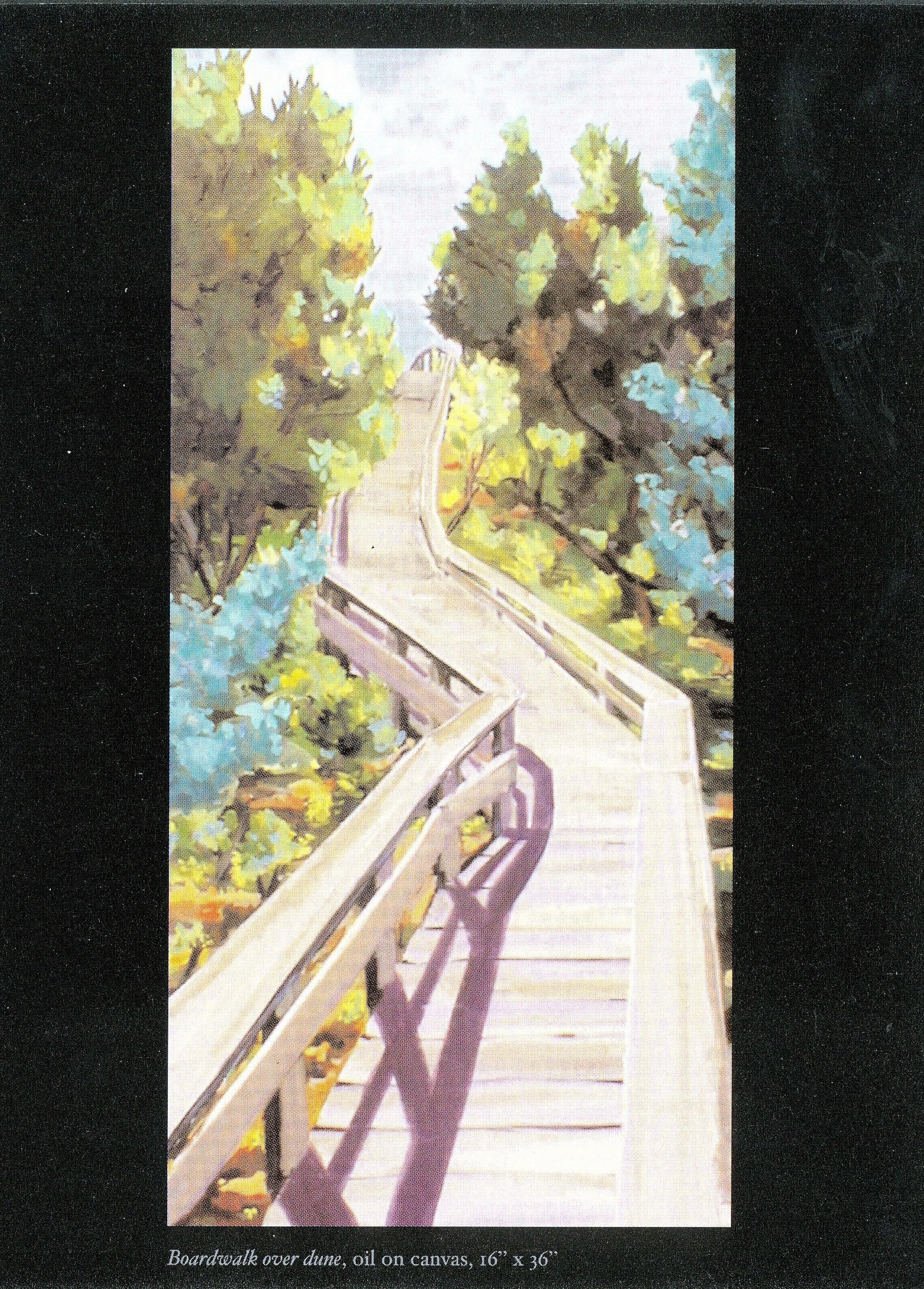
2003
